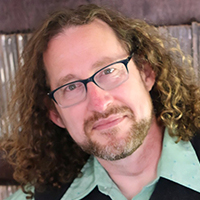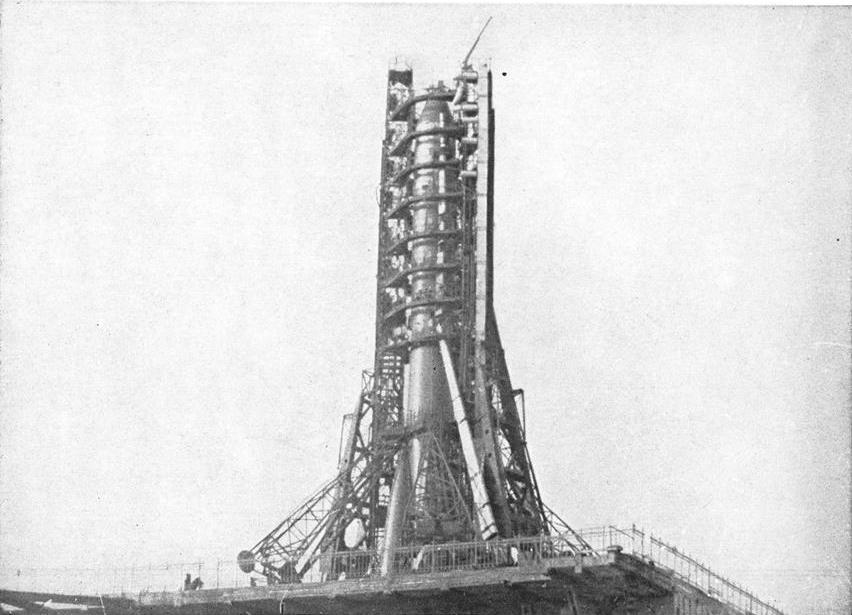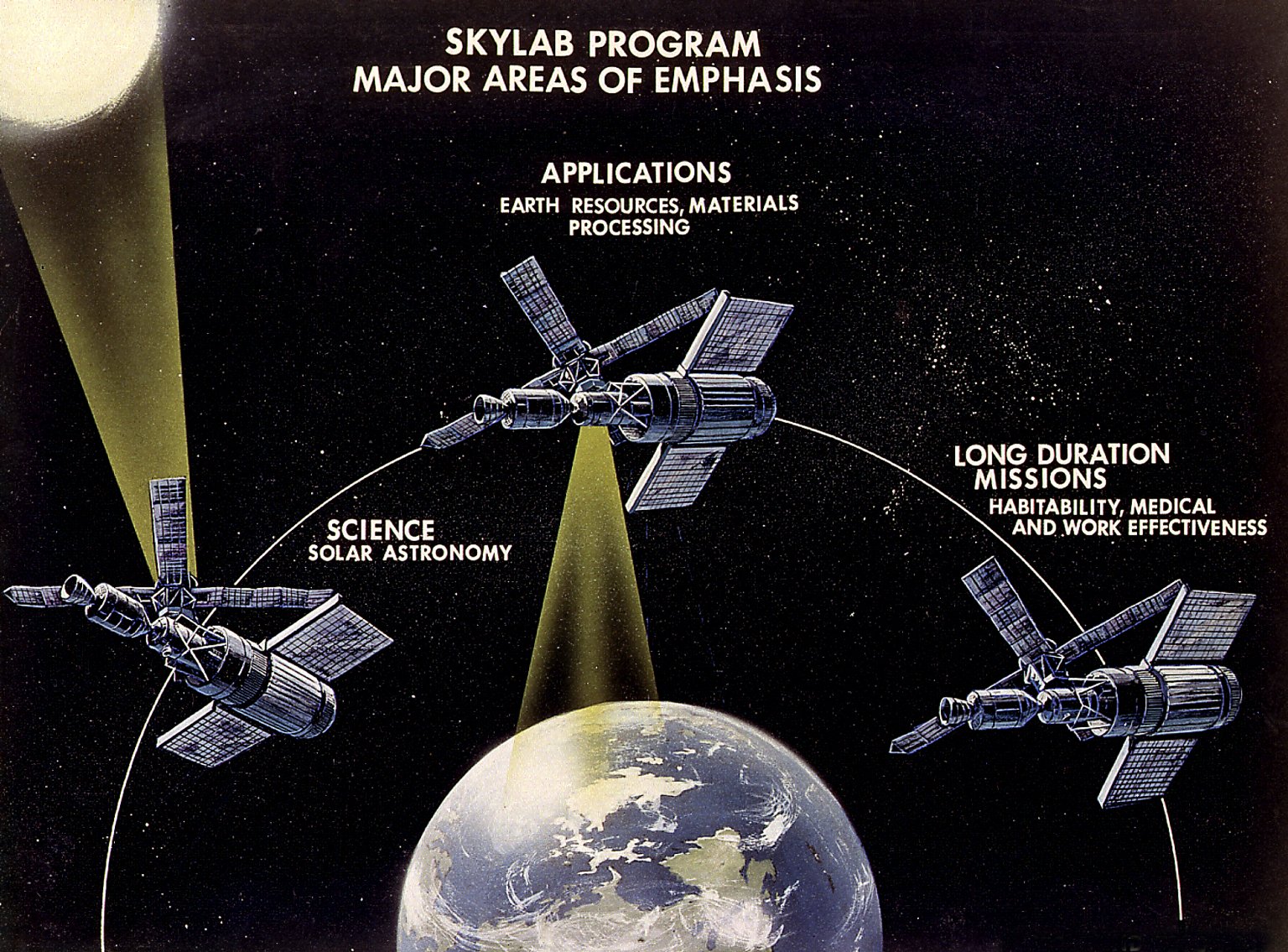Are you finding us from Worldcon?
Join us in Portal 55 (a great deal of DISCORD there…) for weekly broadcasts and perennial discussion!

by Gideon Marcus
Venus or Borscht
Just three days ago, the USSR launched its seventh probe to the second planet, continuing to run up the score against America in the exploration of that world.

Venera 6 on the launchpad—presumably, Venera 7 was launched by a similar rocket
In four months, Venus 7 will complete its 217 million mile trip. Like its three predecessors, Venuses 5 and 6 and Venus 4, the seventh Venus probe is designed as a lander. Of course, there's a little dispute between the two superpowers as to whether any of the prior trio actually reached the surface. Several Western scientists contend that Venuses 4-6 all burned up on their way through the seething, hot atmosphere.
Perhaps Venus 7 will make it all the way down. It weighs 105 pounds more than its predecessors, tipping the scale to 2,596 pounds. Maybe some of that is armor or insulation. Either way, at least Venus 7 is safely on course, which is better than some of its predecessors. Many Soviet "Cosmos" satellites are suspected to have been would-be interplanetary probes whose rockets failed to refire once the craft reached Earth orbit.

Engineers working on Venera 6 (we don't have pictures of Venera 7 yet)
Since Neil Armstrong first set foot on the lunar surface, the Soviets have maintained that they were never in the Moon Race, preferring, instead, to concentrate on exploring the planets and building space stations. Indeed, it's likely the Reds will put up a Venus 8 within the week, just as they sent Venuses 5 and 6 as twins last year. We've only managed two (highly successful) flybys so far.
Ad Venera per aspera. I don't care who explores the planets so long as I get to read the research results!
Summertime
The results are in, however, for the latest issue of F&SF. Plus, I've got a little surprise for you at the end. Let's see what the Ferman family has for us this month:

by Mel Hunter
Continue reading [August 18, 1970] Landed minority (September 1970 Fantasy and Science Fiction)


![[July 31, 1970] Not so Brillo… (August 1970 <i>Analog</i>)](https://galacticjourney.org/wp-content/uploads/2025/07/700731analogcover-672x372.jpg)



![[June 30, 1970] Star light… per stratagem (July 1970 <i>Analog</i>)](https://galacticjourney.org/wp-content/uploads/2025/06/700630analogcover-353x372.jpg)




![[June 20, 1970] Gemini Too (the two-week flight of <i>Soyuz 9</i>)](https://galacticjourney.org/wp-content/uploads/2025/06/700620launch-443x372.jpg)




![[April 26, 1970] Red stars in space (Communist China and the USSR make leaps)](https://galacticjourney.org/wp-content/uploads/2025/04/700426dongfanghong1-672x372.jpg)

![[April 22, 1970] “Houston, We’ve had a Problem Here!” (Apollo-13 emergency in space)](https://galacticjourney.org/wp-content/uploads/2025/04/Apollo-13-13-672x372.jpg)


![[March 30, 1970] The Age of Explorer — the end of the Space Race](https://galacticjourney.org/wp-content/uploads/2025/03/700331nixon-672x372.jpg)

![[March 20, 1970] Here comes the sun (April 1970 <i>Fantasy and Science Fiction</i>)](https://galacticjourney.org/wp-content/uploads/2025/03/700320fsfcover-651x372.jpg)


![[February 26, 1970] Made in Japan! (Ohsumi, first Japanese satellite)](https://galacticjourney.org/wp-content/uploads/2025/02/Ohsumi-1-3-672x372.jpg)

